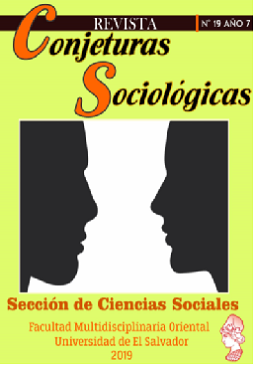Cómo la inteligencia artificial altera el paisaje de las seguridades
Palabras clave:
Agentes inteligentes automatizados, sistemas autónomos, ingeniería social, hackeo cívico, panorama de seguridades, automated intelligent agents, autonomous systems, social engineering, civic hacking, security overview.Resumen
El conocimiento explícito del matemático británico Alan Turing y las ideas de la generación Beat dieron entrada a la tercera revolución industrial respaldada en la electrónica, la tecnología de información y la producción automatizada. El ensayo “Máquina computacional e Inteligencia” del británico fue publicado en octubre de 1950 en la edición 49 de la revista Mind. Mientras que las ideas de contracultura llevaron a la ciudadanía norteamericana a marchar pacíficamente contra la guerra de Vietnam portando carteles con la frase “Free Speech”, a establecer una universidad gratis en Palo Alto donde las personas compartían y consumían lo que podía pasar y a los ingenieros y programadores que trabajaban para las empresas de electrónica y computación en Silicon Valley pretender poseer una computadora personal. El pensamento en “los Silicon boys” por derecho propio se sustentó en un hacker interesado en desarrollar aparatos electrónicos y computacionales personalizados. Junto había otro tipo que entendía del negócio relacionado con programación computacional. Los dos trabajadores se fusionaron en comunidad, de manera correcta, y organizaron empresas de garaje que luego convirtieron en corporaciones globales. Aquellos años 1960 terminaron con un hombre caminando sobre la Luna. Las capacidades de la inteligencia artificial y el aprendizaje automático han progresado tan aceleradamente dentro de las máquinas que vivimos la cuarta revolución industrial, pero su desarrollo digital há permitido asimismo una gama amplia de aplicaciones de doble uso: beneficiosas para la humanidad e inconvenientes para la sociedad, según sea el componente crítico que se activa en los círculos de uso. How artificial intelligence alters landscape of securities The explicit knowledge of the British mathematician Alan Turing and the ideas of the Beat generation gave way to the third industrial revolution backed by electronics, information technology and automated production. The British essay "Computational Machine and Intelligence" was published in October 1950 in the 49th edition of Mind magazine. While the ideas of counterculture led the American citizens to march peacefully against the Vietnam War carrying posters with the phrase "Free Speech", to establish a free university in Palo Alto where people shared and consumed what could happen and the engineers and programmers who worked for the electronics and computer companies in Silicon Valley pretending to own a personal computer. The thinking in "the Silicon Boys" in its own right was based on a hacker interested in developing customized electronic and computational devices. There was another guy who understood the business related to computer programming. The two workers merged in community, in the right way, and organized garage companies that they later turned into global corporations. Those 1960s ended with a man walking on the moon. The capacities of artificial intelligence and machine learning have progressed so fast within the machines that we lived the fourth industrial revolution, but its digital development has also allowed a wide range of dual use applications: beneficial for humanity and disadvantages for society, depending on the critical component that is activated in the circles of use.Descargas
Citas
Allden, K., & Murakami, N. (2015). Trauma and recovery on war's border. Hanover: Dartmount College Press.
Alston, P. (2010). Report of the Special Rapporteur on extrajudicial, summary or arbitrary. Geneva: United Nations Human Rights Council.
Asaro, P. (2012). On banning Autonomous Weapons Systems: Human rights, automation and the dehumanisation of lethal decision making. International Review of the Red Cross, 94 (886), 687-709.
Biddle, P., & et al. (18 de noviembre de 2002). The Darknet and the future of content distribution. Obtenido de Crypto Stanford: https://crypto.stanford.edu/DRM2002/darknet5.doc
Brundage, M., & et al. (2018). The malicious use of Artificial Intelligence: forecasting, prevention and mitigation. Maliciousaireport.com, 1-100.
Brynjolfsson, E., & Saunders, A. (2009). What the GDP Gets Wrong (Why Managers Should Care). Sloan Management Review, 51 (1), 95-96.
Castells, M. (2001). La Galaxia Internet. Reflexiones sobre empresa, sociedad e Internet. Barcelona: Plaza & Janés.
Cummings, M., & et al. (2018). Artificial Intelligence and international affairs disruption anticipated. London: Chatham House.
Diamond, L. (2010). Liberation Technology. Journal of Democracy, 21 (3), 69-83.
Dinstein, Y. (2012). The principle of distinction and cyber war in International Armed Conflicts. Journal of Conflict and Security Law, 17 (2), 261-277 .
Drozhzhin, A. (20 de abril de 2017). Trampas en aplicaciones: el impresionante mundo de los bots de Tinder. Obtenido de Kaspersky Lab: https://www.kaspersky.es/blog/tinder-bots/10439/
Gómez Blanco, A. (8 de enero de 2018). Ataques de ingeniería social: qué son y cómo evitarlos. Obtenido de BBVA: https://www.bbva.com/es/ataques-ingenieria-social-evitarlos/
González, F. (2018). De la era de la perplejidad a la era de las oportunidades: finanzas para el crecimiento. En J. Kallinikos, & et al., La Era de la Perplejidad. Repensar el mundo que conocíamos. (pág. 416). Madrid: Taurus.
Hernández Lorente, A., & Fojón Chamorro, E. (22 de abril de 2014). De Estonia a Ucrania, la evolución de los conflictos en el ciberespacio. Obtenido de Belt: http://www.belt.es/expertos/HOME2_experto.asp?id=6927
Holak, B. (octubre de 2018). Por qué EY está invirtiendo en iniciativas de IA, datos y blockchain. Obtenido de Search Data Center en Español: https://searchdatacenter.techtarget.com/es/cronica/Por-que-EY-esta-invirtiendo-en-iniciativas-de-IA-datos-y-blockchain
IFR. (18 de octubre de 2018). Service robots - global sales value up 39 percent. Obtenido de IFR: https://ifr.org/ifr-press-releases/news/service-robots-global-sales-value-up-39-percent
Jordan, M. I., & Mitchell, T. M. (2015). Machine learning: trends, perspectives, and prospects. Science , Vol. 349, pp. 255-260.
Lomas, N. (25 de 04 de 2017). Lyrebird is a voice mimic for the fake news era. Obtenido de Techcrunch: https://techcrunch.com/2017/04/25/lyrebird-is-a-voice-mimic-for-the-fake-news-era/
Makuch, B. (Dirección). (2016-2017). Cyberwar. Hacked by China. [Película].
Mitnick, K., & Simon, W. (2007). El arte de la intrusión. México: Alfaomega Grupo Editor.
Mitroff, S. (15 de mayo de 2016). ¿Qué es un 'bot'? Te contamos todo lo que necesitas saber. Obtenido de CNET: https://www.cnet.com/es/como-se-hace/que-es-un-bot/





